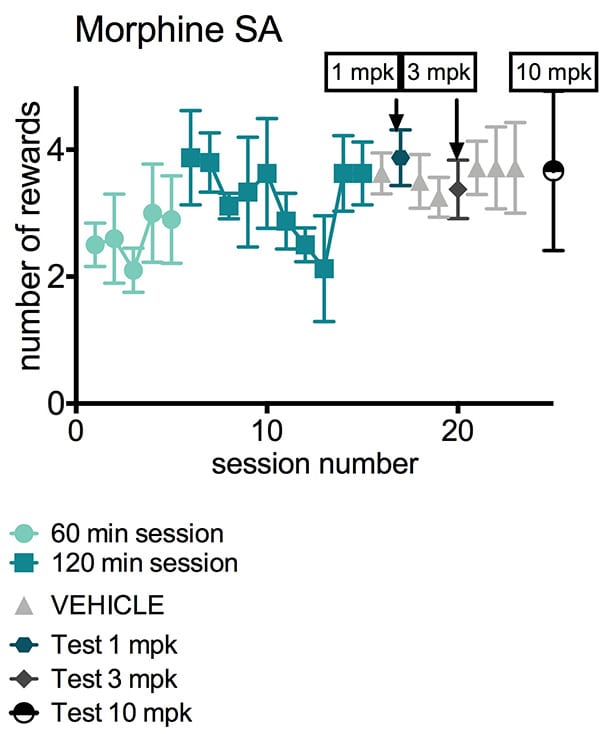Self-Administration
Discover how Melior’s unique phenotypic screening platforms can uncover the untapped value of your candidate therapeutic
Drug self-administration in animals is the “gold standard” preclinical procedure for measuring the reinforcing (i.e. rewarding/aversive) effects of drugs. This animal model of addiction is widely used for preclinical evaluation and screening of novel pharmaceutical products for drug abuse potential as well as in the treatment of drug abuse and dependence.
In this paradigm, subjects are trained to press a lever which results in the delivery of a drug “reinforcer”. The salience of the drug reinforcement, or abuse potential, can be determined.
Basic research studies suggest that the underlying pharmacological mechanisms and neural circuitries mediating the reinforcing properties of drugs in animals overlap considerably with those mediating the abuse related effects of drugs in humans. More than 20 psychoactive drugs that are abused by humans function as “reinforcers” in rats, supporting the hypothesis that drug self-administration in animals is a reliable predictor of abuse liability in humans and a valid animal model of addiction.
The study summarized below illustrates animals that were trained to self administer an opioid and then tested for the effects of a Vehicle and Cpd A to influence the rate of Self Administration
Acquisition of MORPH self-administration and the effect of treatments. Rats were trained to self-administer MORPH (0.375 mg/kg/infusion) on FR1 schedule of reinforcement over 2-hr session. Animals were trained daily, 5 days a week. Vehicle and compound (escalating doses) were administered as indicated by arrows. On other days, only vehicle was administered. Data are presented as average ±SEM, N=8. There was no significant effect of the treatment with the compound ) two-way ANOVA).

